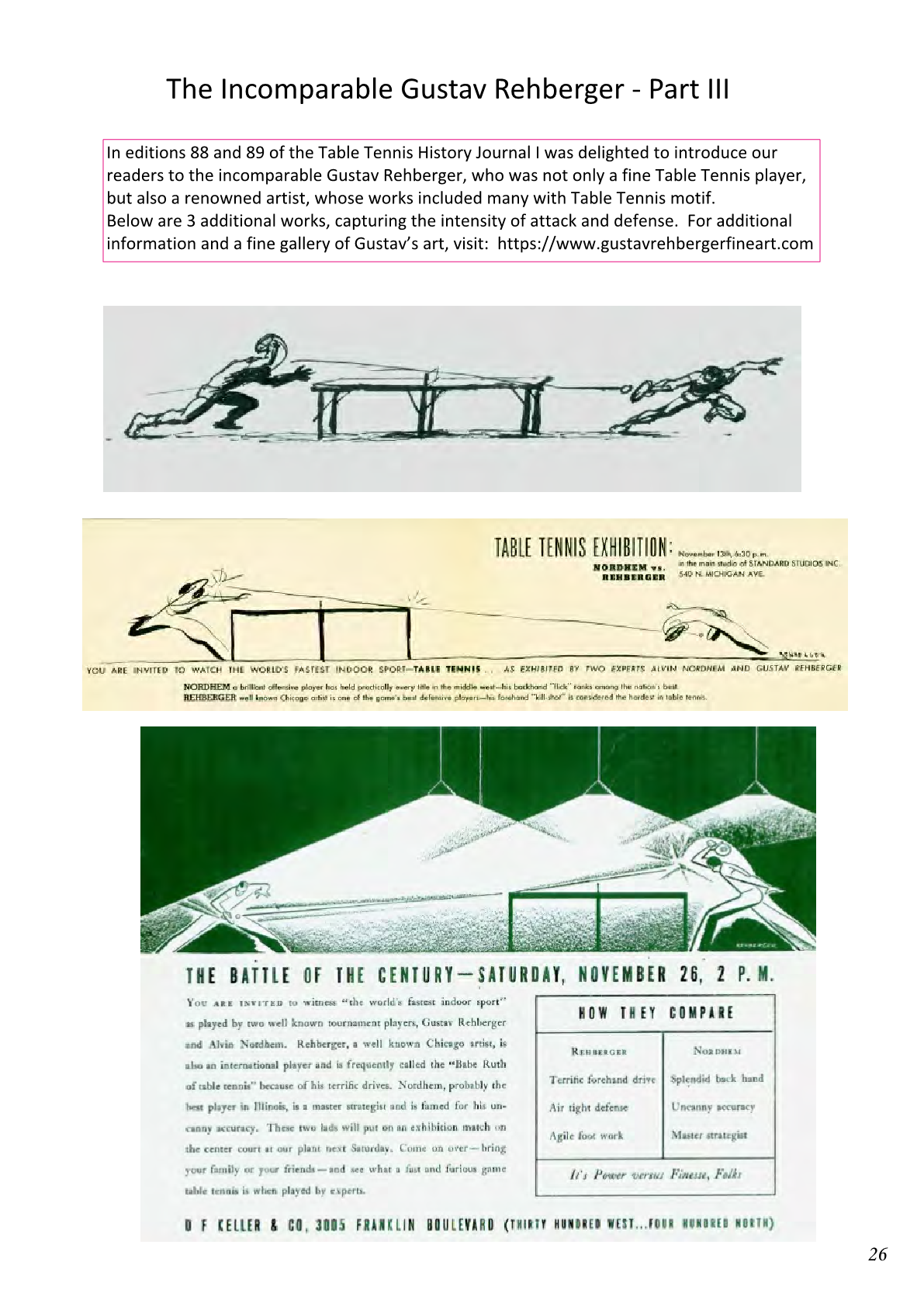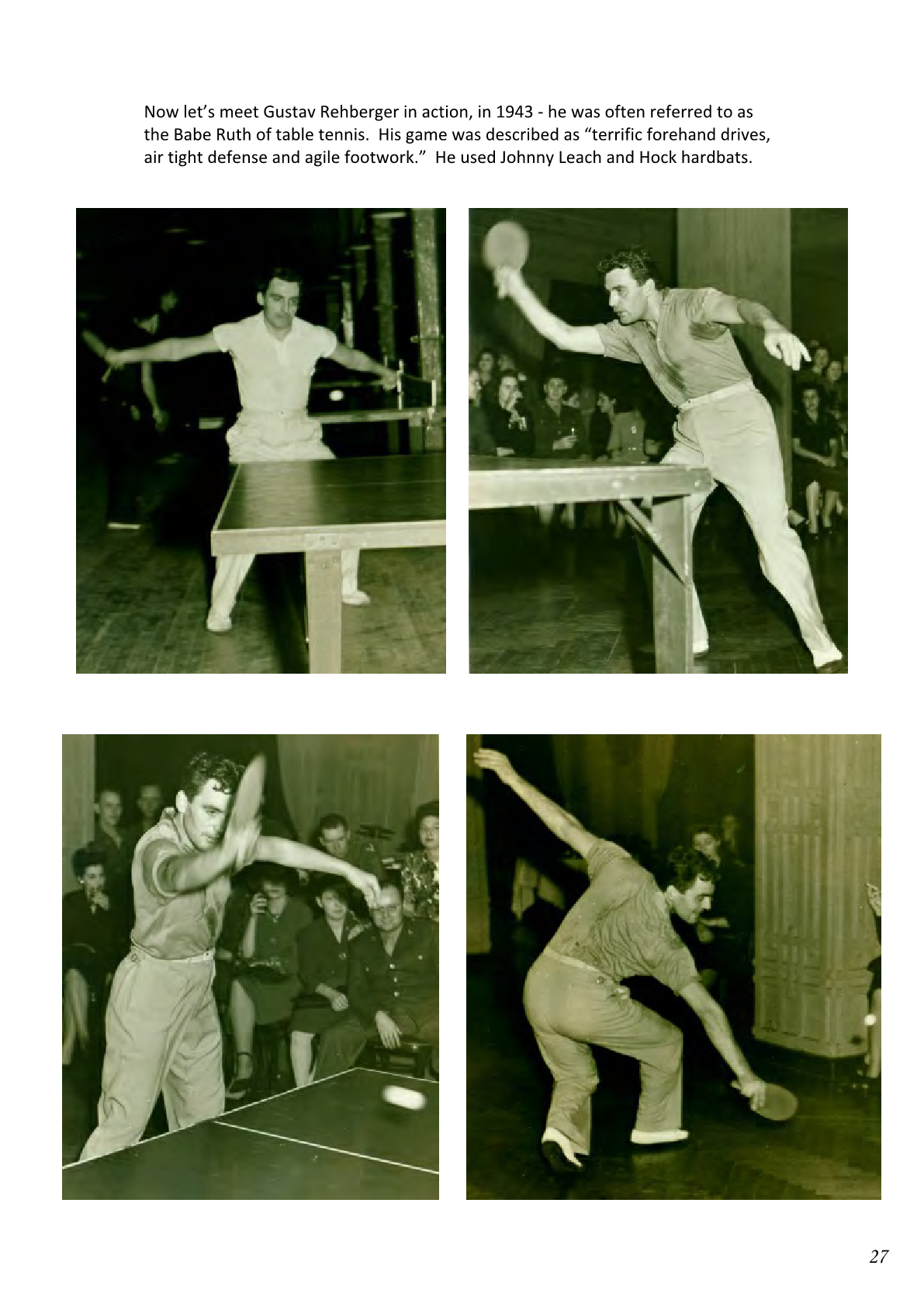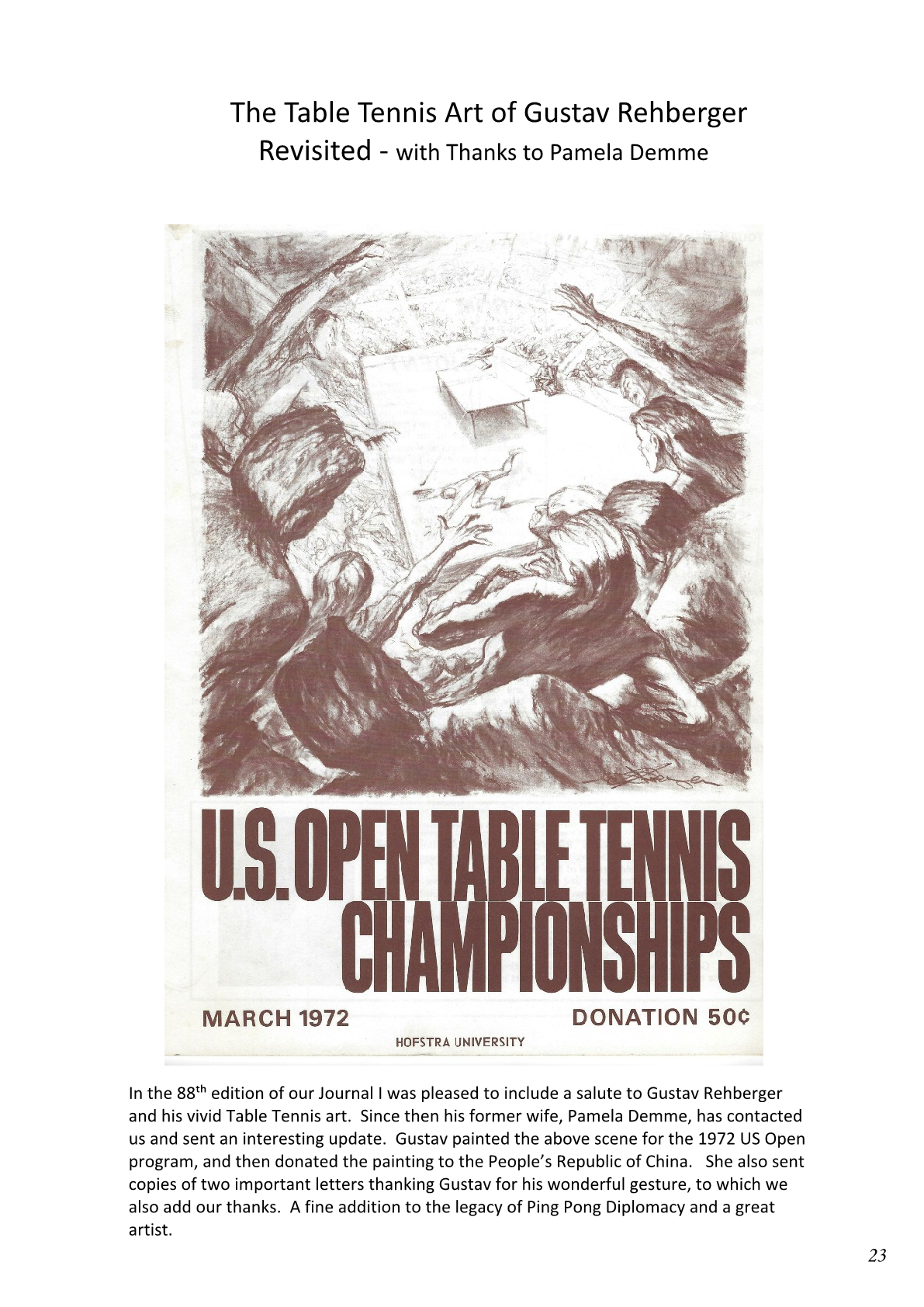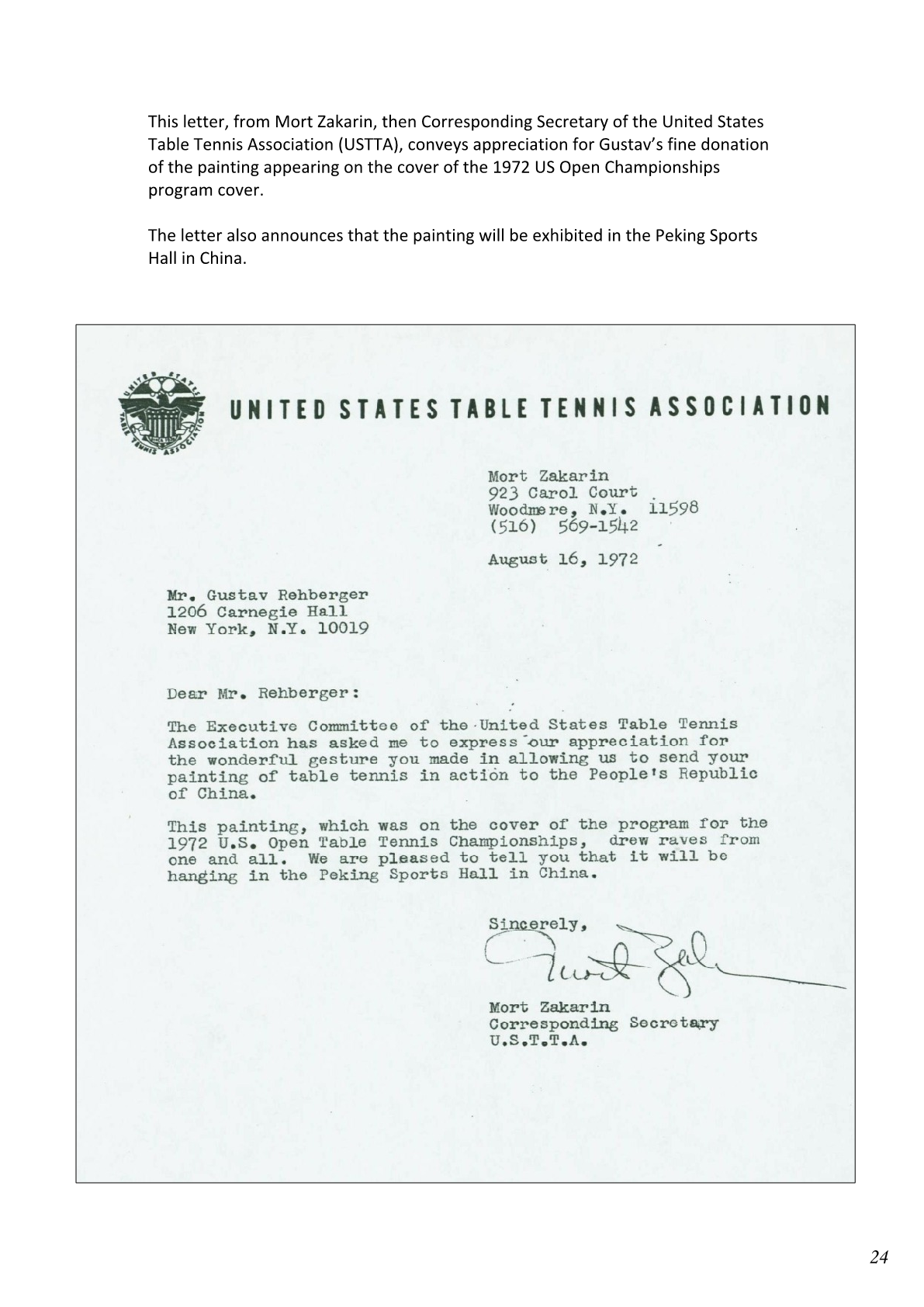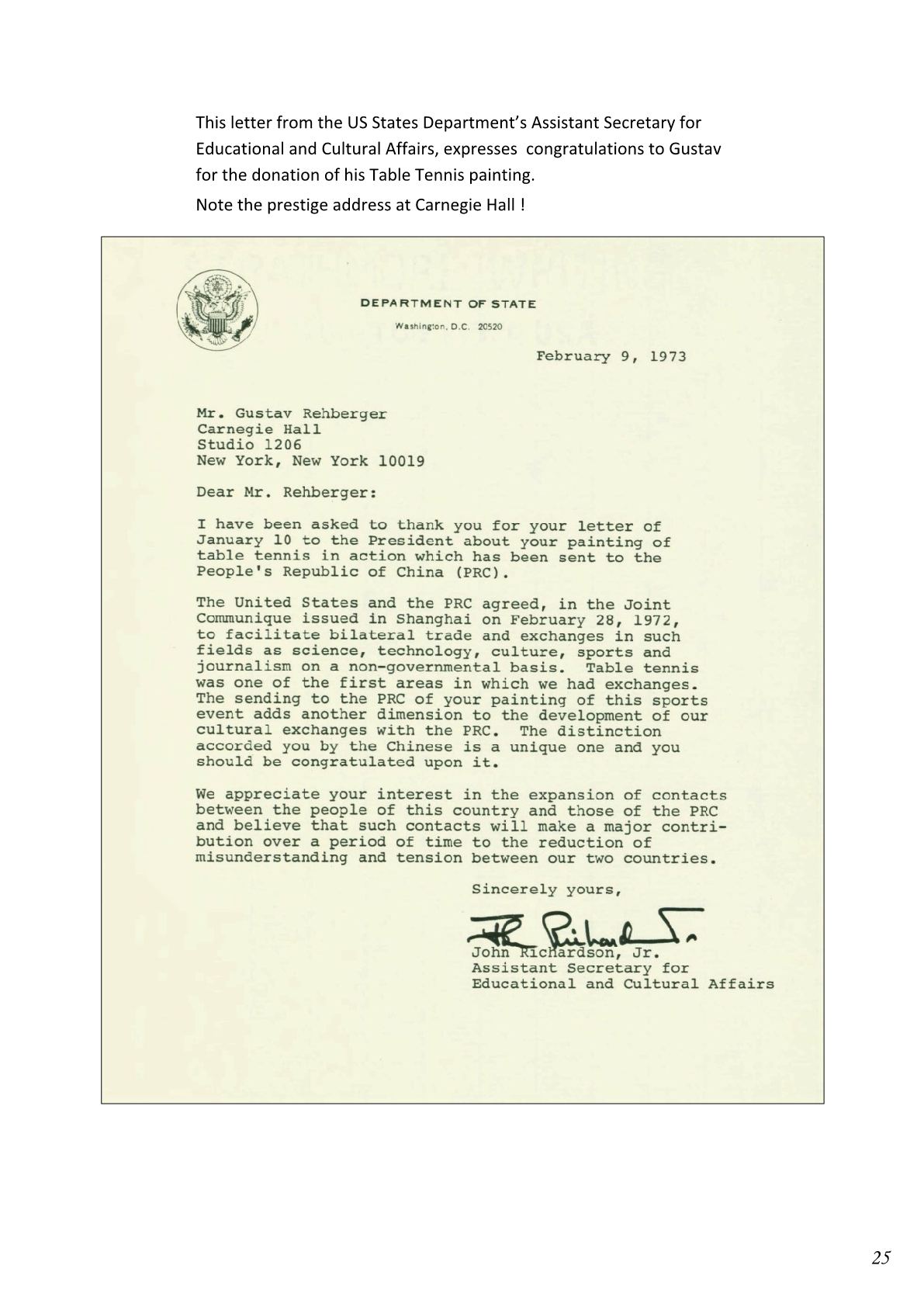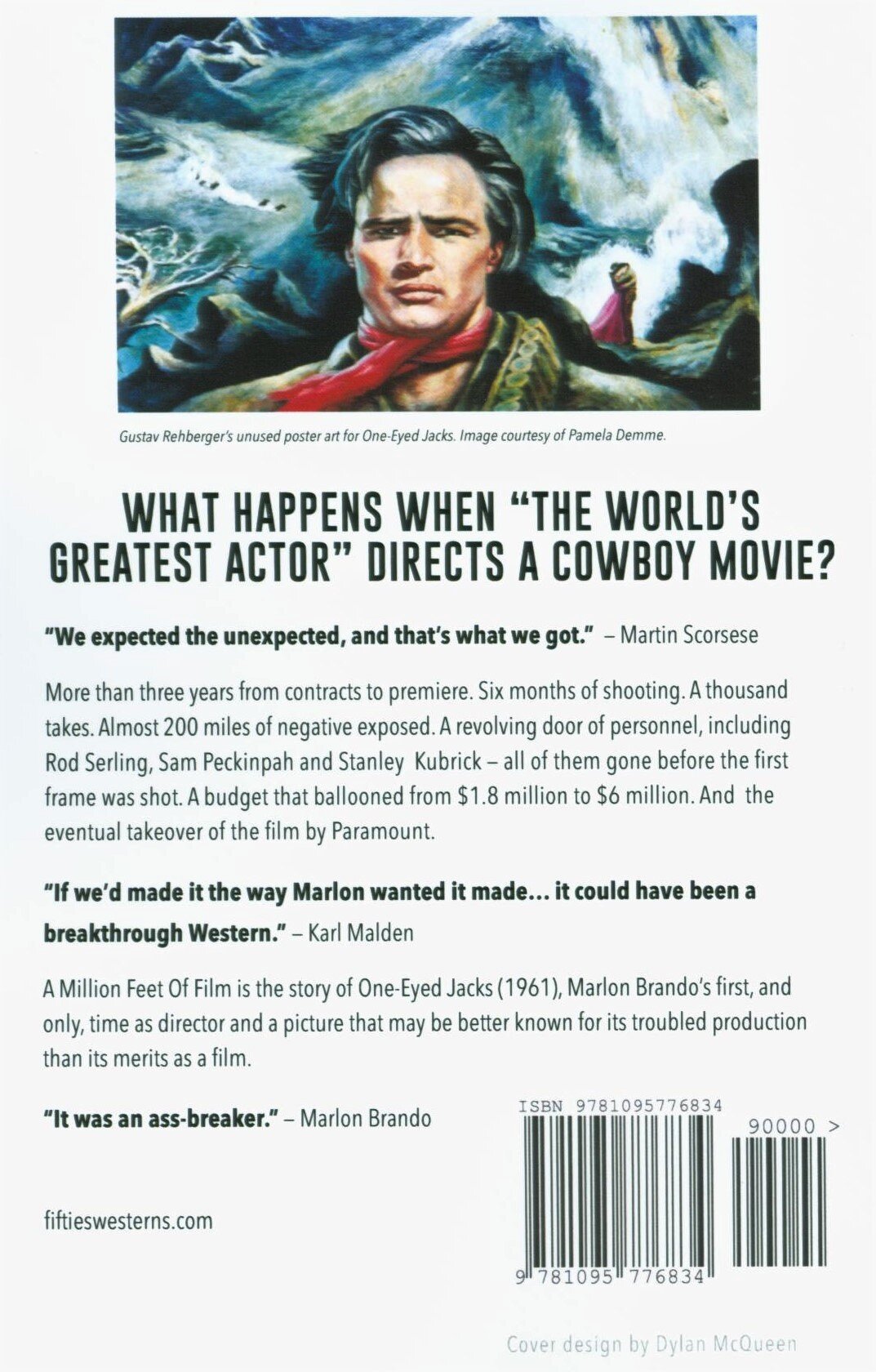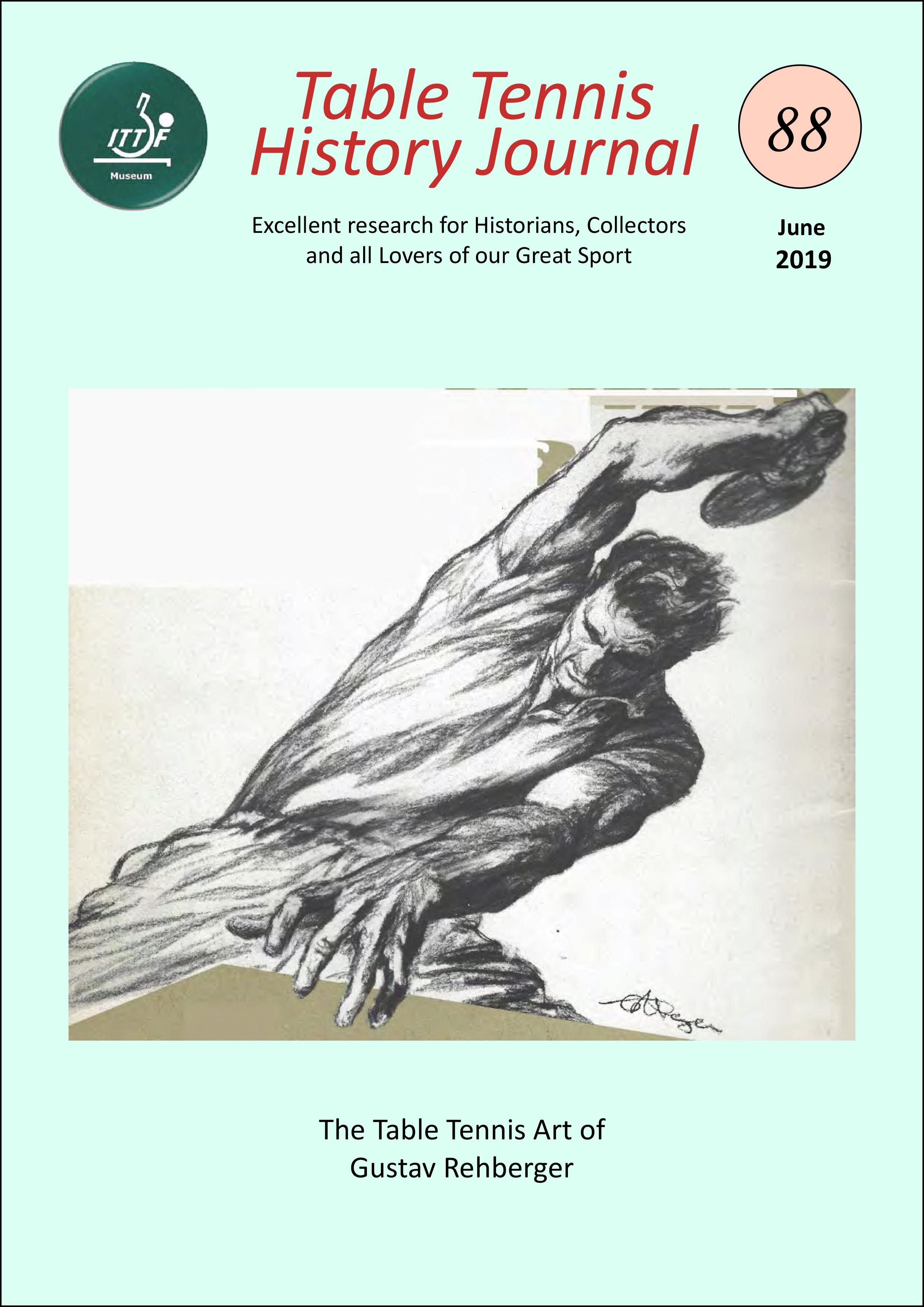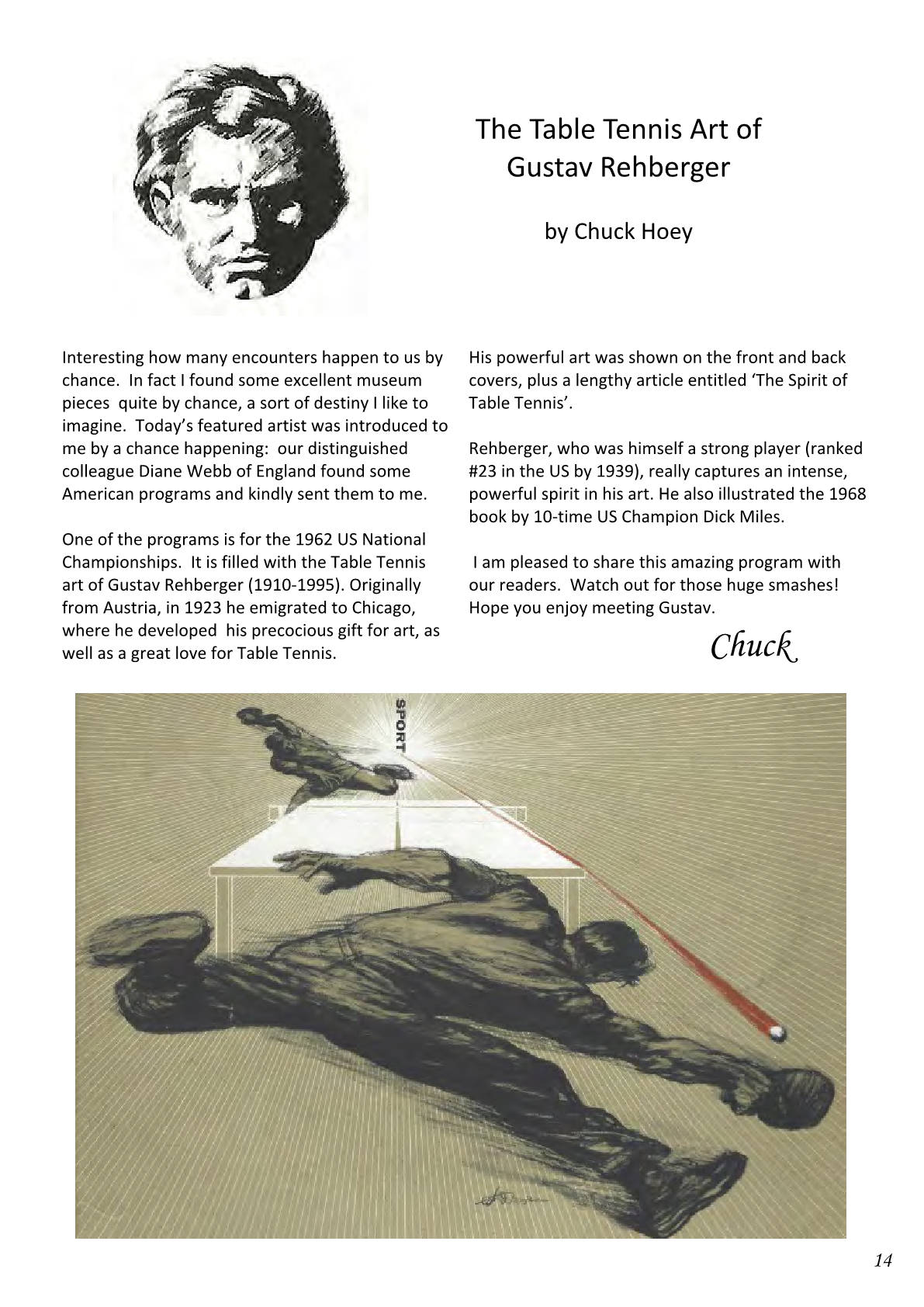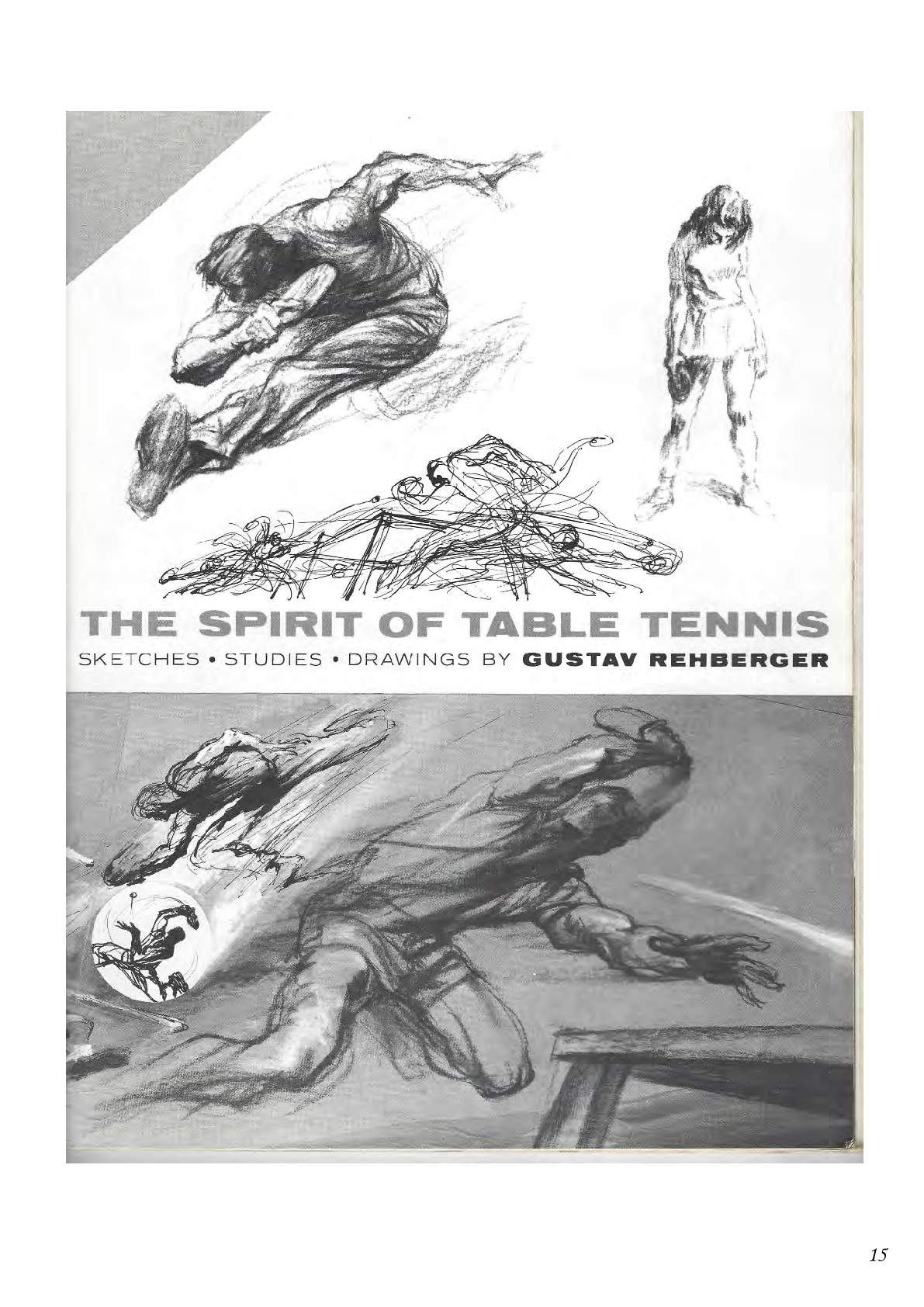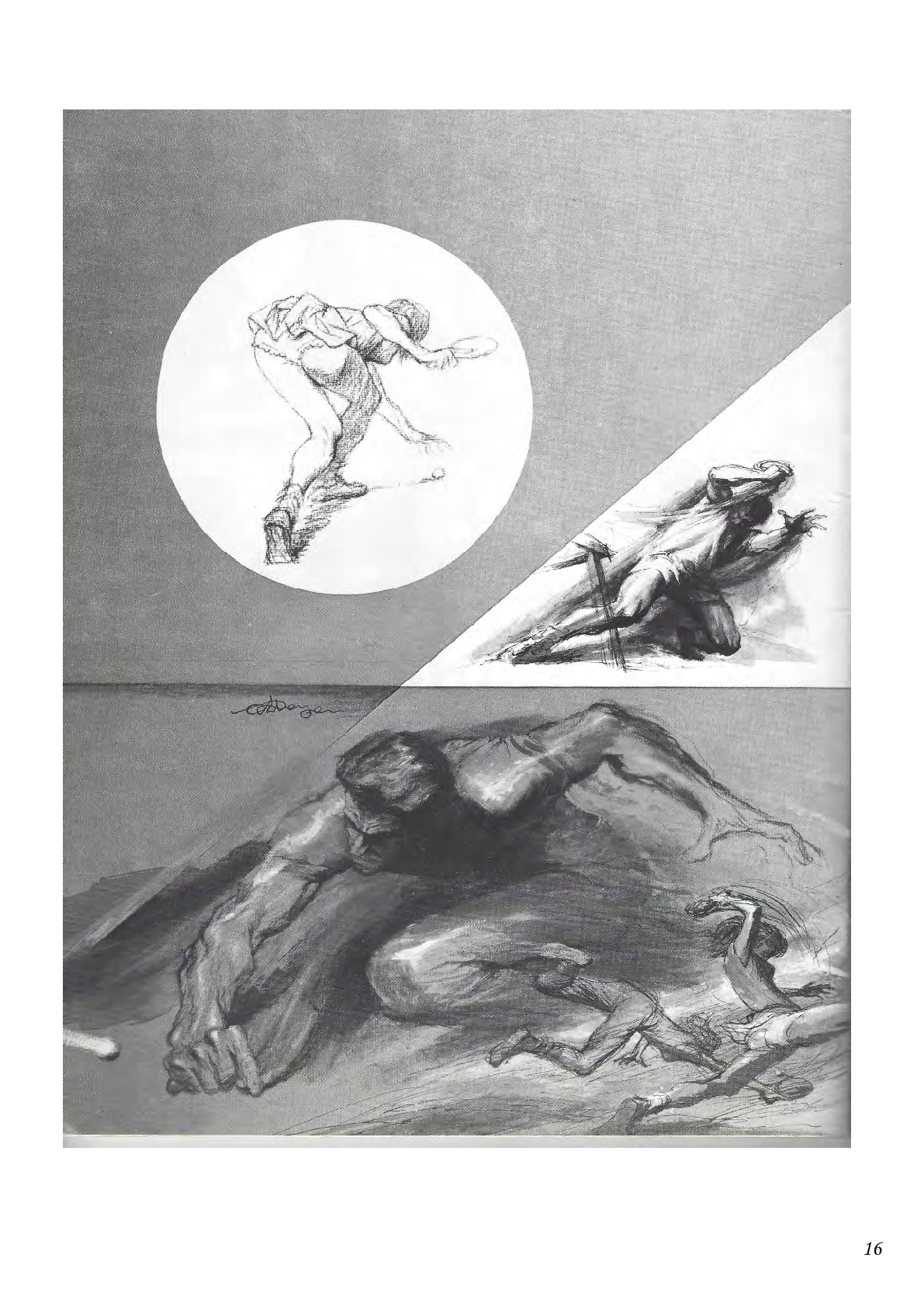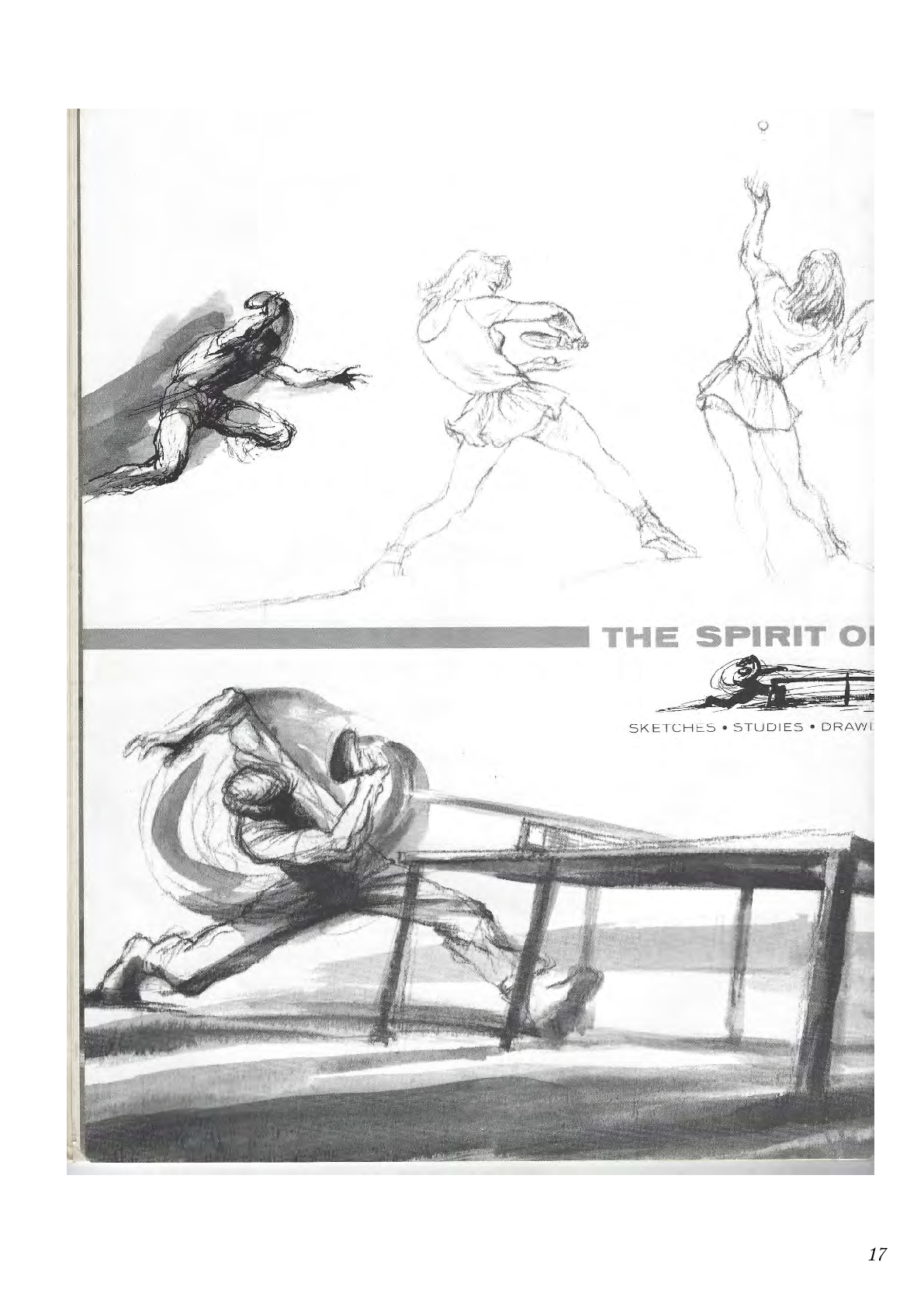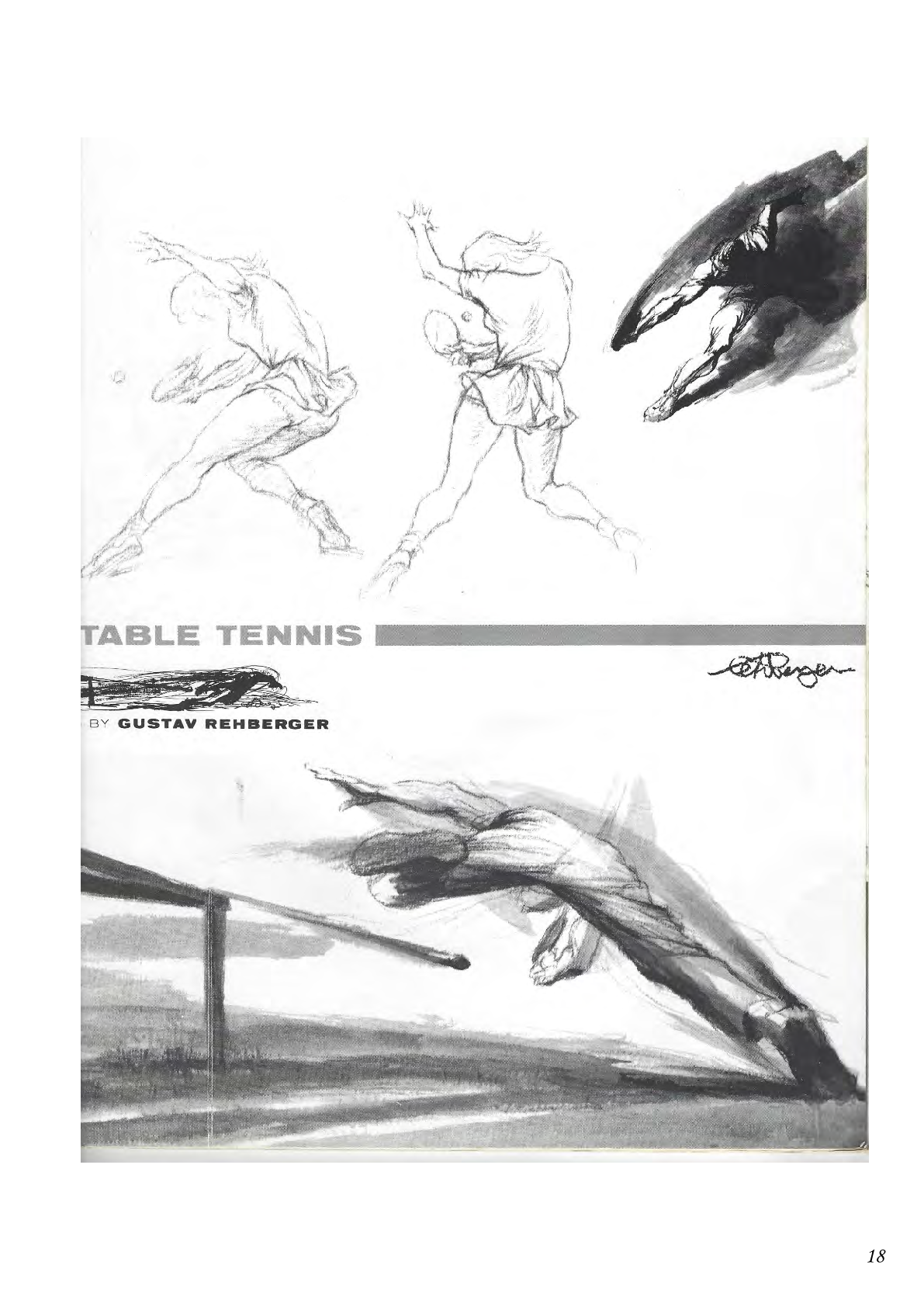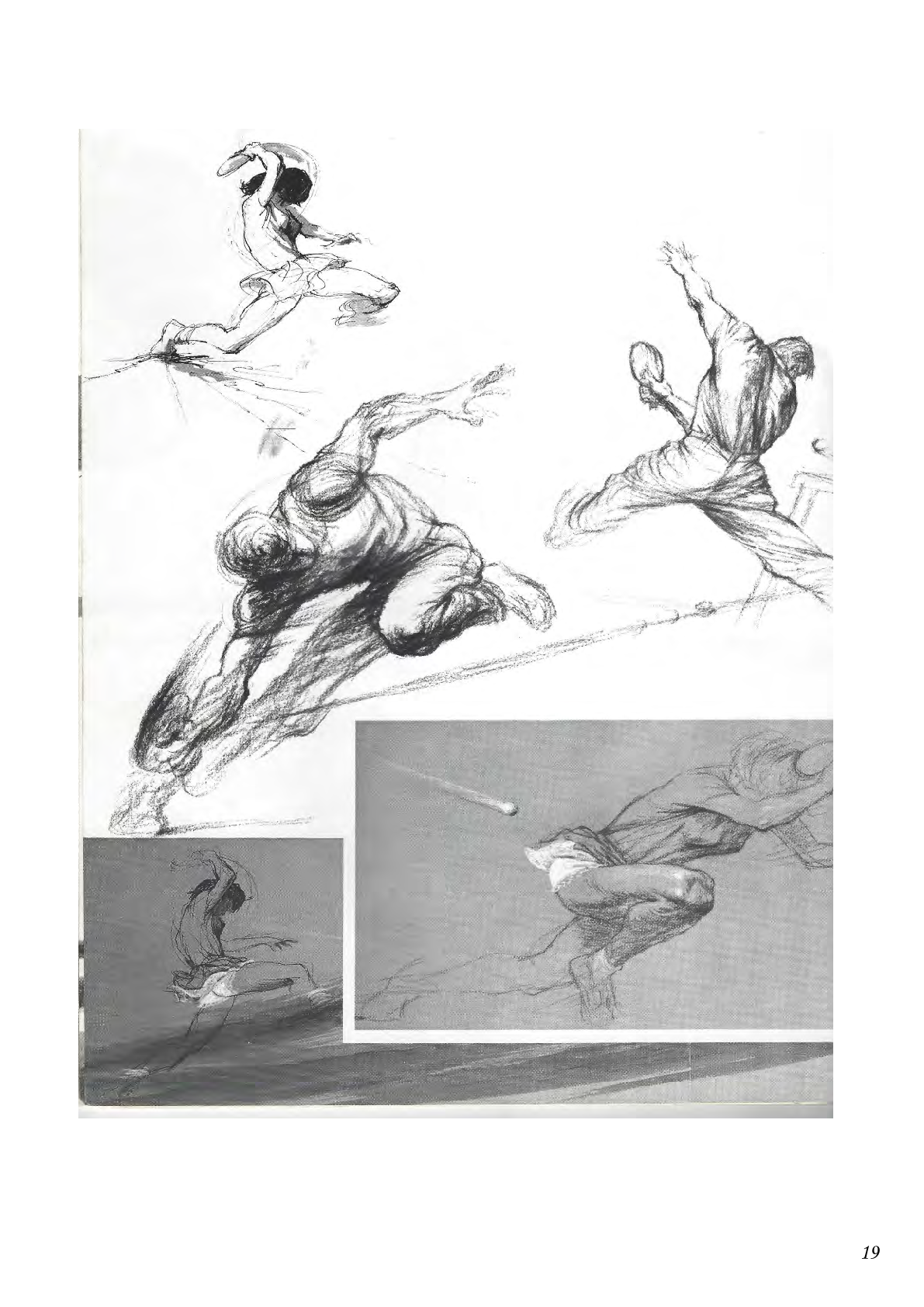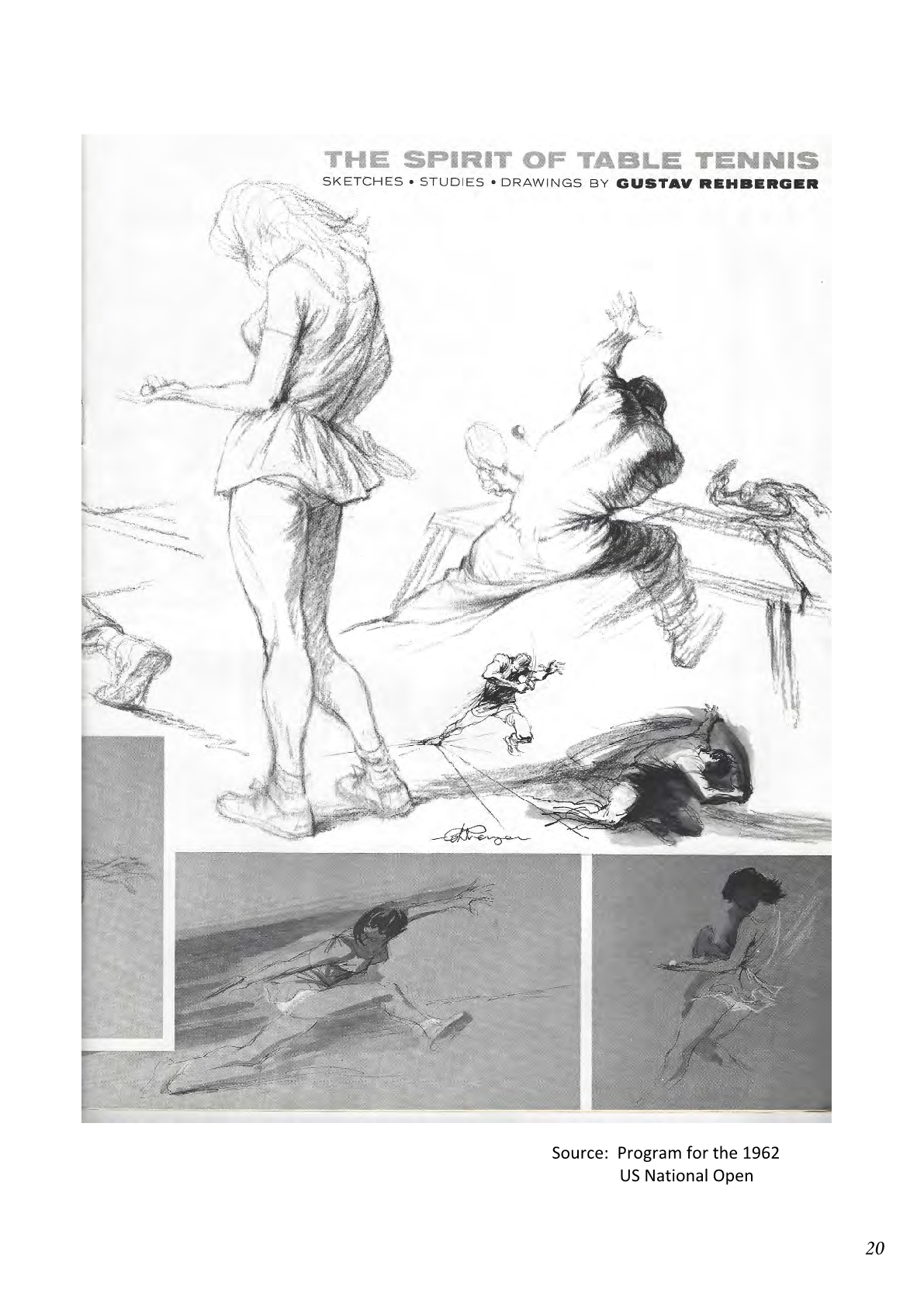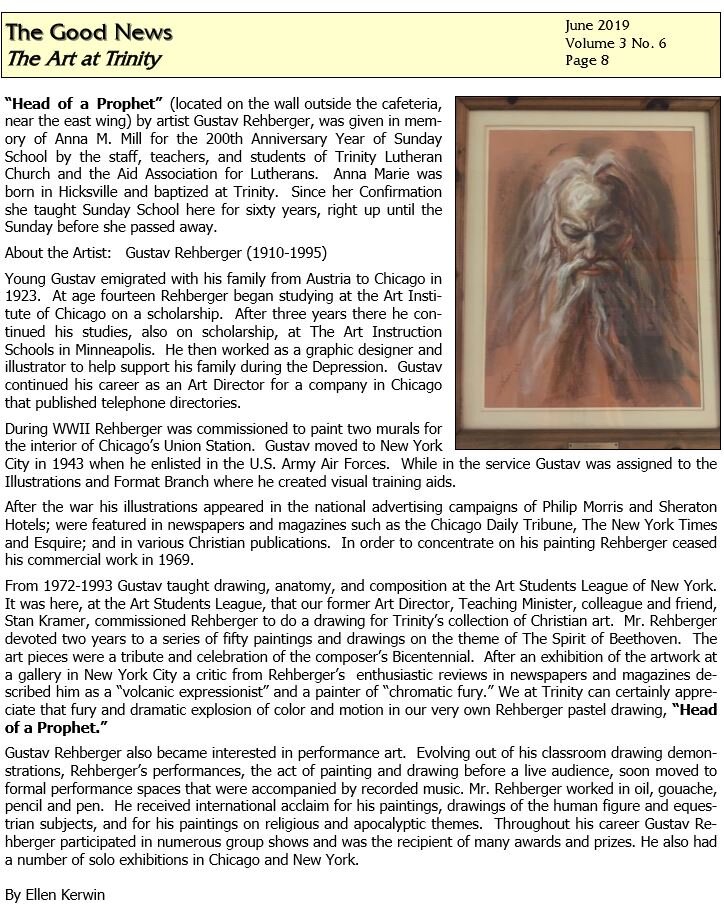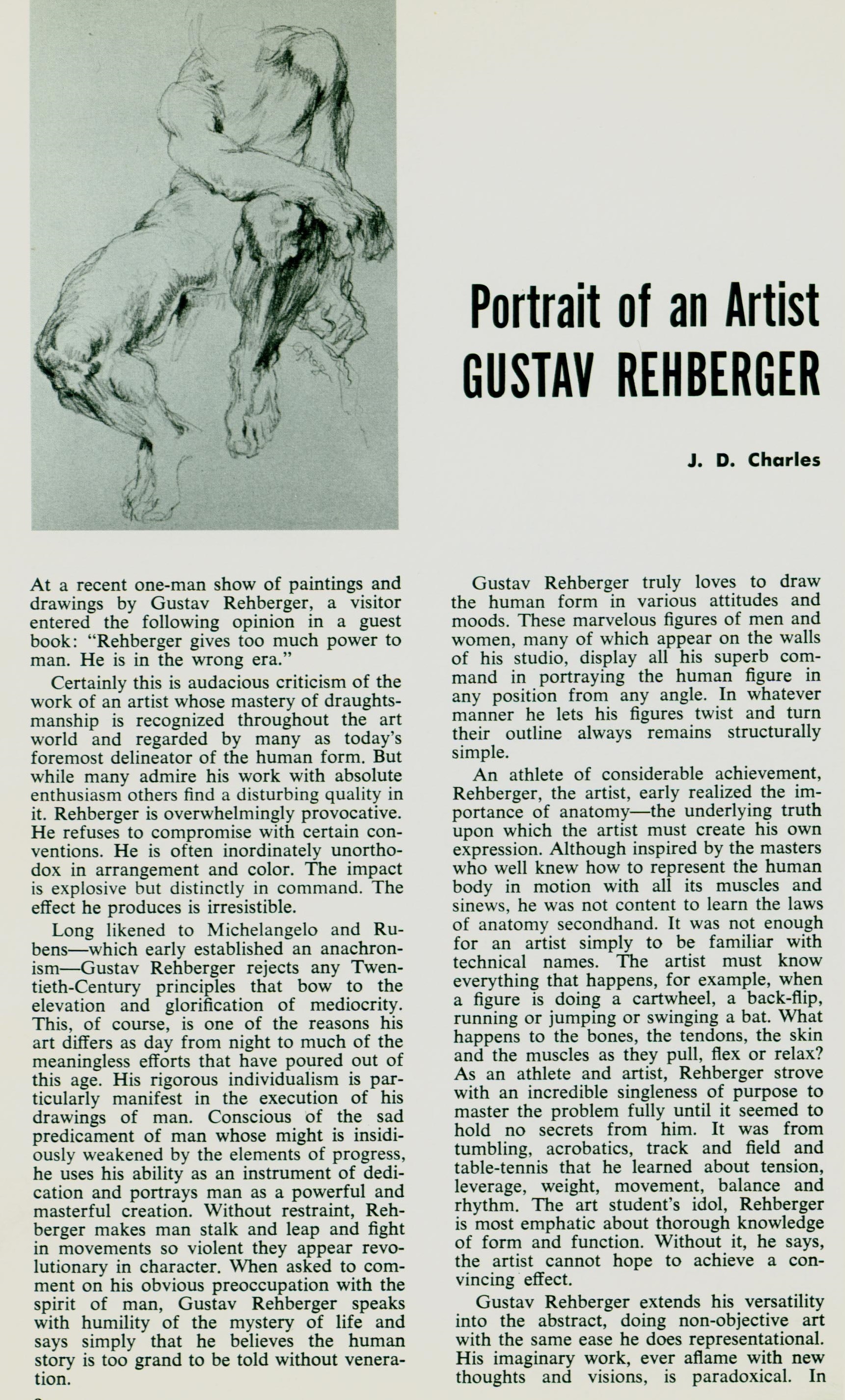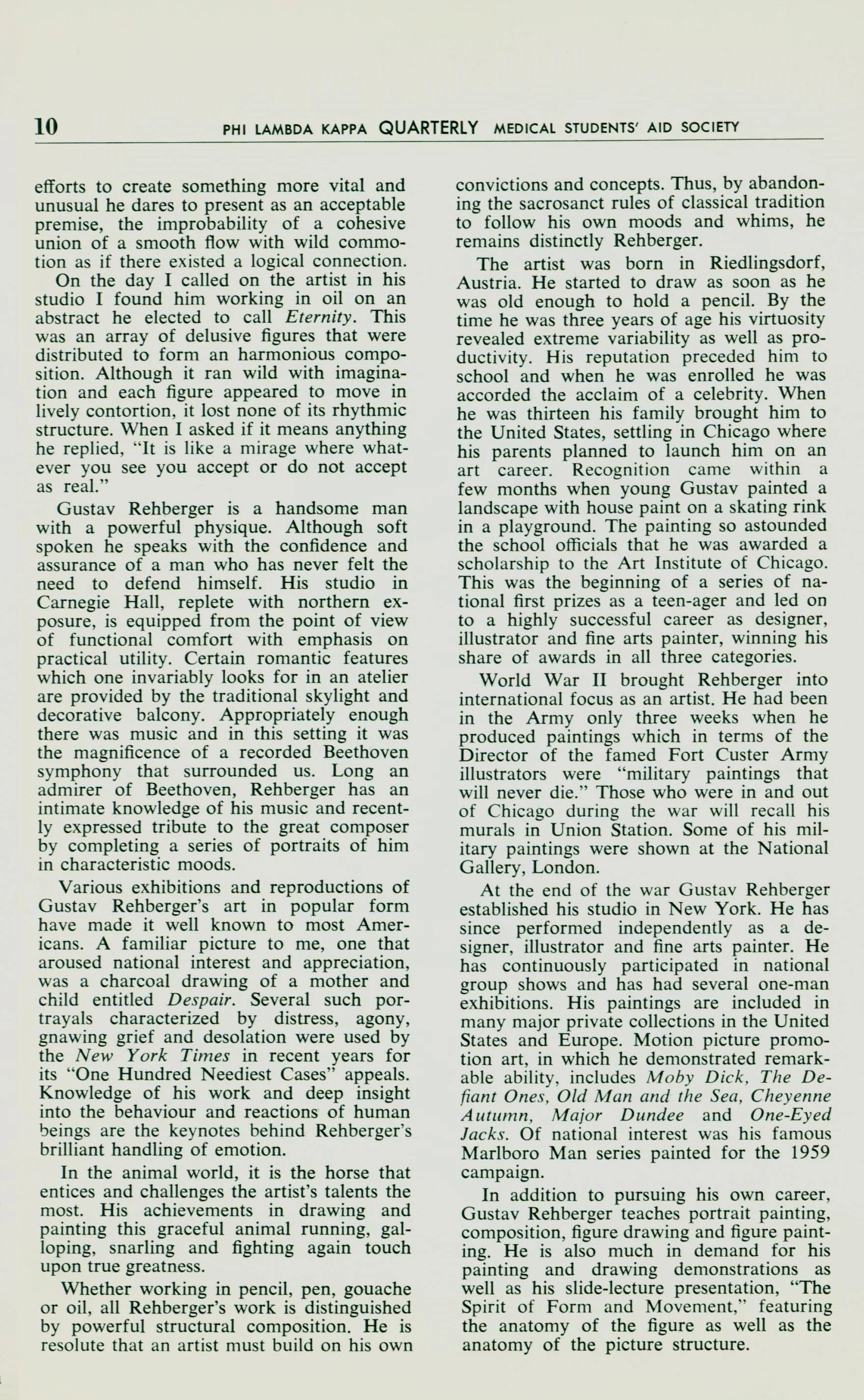PRESS
2020
TABLE TENNIS HISTORY JOURNAL
“The Incomparable Gustav Rehberger - Part III” by Chuck Hoey
Table Tennis History Journal #90 February 2020, a publication of the International Table Tennis Federation.
2019
TABLE TENNIS HISTORY JOURNAL
“The Table Tennis Art of Gustav Rehberger Revisited” by Chuck Hoey
Table Tennis History Journal #89 October 2019, a publication of the International Table Tennis Federation.
“A Million Feet Of Film: The Making Of One-Eyed Jacks” by toby roan
Toby Roan is an expert in classic Western films and has penned a new book titled, “A Million Feet Of Film: The Making Of One-Eyed Jacks”.
“This is the story of Marlon Brando’s “One-Eyed Jacks”, his first, and only, time as director and a picture that may be better known for its troubled production than its merits as a film. More than three years from contracts to premiere. Six months of shooting. Almost 200 miles of negative exposed. A revolving door of personnel, including Rod Sterling, Sam Peckinpah and Stanley Kubrick — all gone before the first frame was shot. A budget that ballooned from $1.8 million to $6 million. And the eventual takeover of the film by Paramount.” Toby Roan, Author.
In 1961, Gustav was commissioned to create promotional art for the film but unfortunately the artwork was never used. Toby Roan paid homage to Gustav's unused illustration of Marlon Brando by placing it on the back cover of his new book. Movie buffs can learn more about classic westerns at Toby’s website 50 Westerns From The 50s.
TABLE TENNIS HISTORY JOURNAL
“The Table Tennis Art of Gustav Rehberger” by Chuck Hoey
Table Tennis History Journal #88 June 2019, a publication of the International Table Tennis Federation.
TRINITY LUTHERAN CHURCH & SCHOOL, Hicksville, New york
Ellen Kirwin, “The Art at Trinity.” The Good News, June 2019.
The Burgenland Bunch News
Thomas Steichen. Gustav Rehberger: Artist and Riedlingsdorf Native Son. April 2019
1996
Austria Kultur
"A modern Renaissance man, [Gustav Rehberger] was an artist of exceptional natural capacity for creative and original conceptions and unparalleled versatility. Internationally acclaimed, Gustav Rehberger was properly called as a 'volcanic expressionist.'
And so he was. Whether working in pencil, pen, gouache or oil, his uncompromising individualism was glaringly evident. Every line, every stroke was charged with a continuous flow of activity; whirling, driving--a blaze of tempests, turbulence, exciting commotion when one would expect the subject to leap off the paper or canvas."
This chromatic fury, however, was not born of sheer imagination. Living images of his childhood, be it a raging flood, a violent storm, overturned wagon or horses on a rampage - all eruptive violence - made such an indelible impression on young Rehberger that throughout his professional career these mental treasures triumphed as a viable source of inspiration.
Gustav Rehberger died in New York City on July 22, 1995. He was 85 years old. Although he was best known for his towering achievements, his drawings and paintings of the human figure, of equestrian and horse subjects and apocalyptic themes, his religious works, of which he made many, were marked by intense reverence - treated by the brush of an artist who truly believed in the majesty of God.
Gustav Rehberger was born in Riedlingsdorf, Austria the second of Elizabeth and Josef Rehberger's three children. Fame came early to Gustav Rehberger. Drawing from inner compulsion, he was a celebrity by the age of four. As a school boy his drawings were greatly admired and drew honeyed words of praise from his teachers.
In 1923 Gustav came to the United States with his family. They settled in Chicago. His career in the world of art took off at once. The gifted Austrian was fourteen years old when Chicago newspapers carried such banner headlines as "Immigrant boy in the United States one year wins scholarship" and "Austrian school-boy ice artist wins chance for career."
Gustav Rehberger's meteoric career literally began with a cake of ice, a large cake. In Chicago's Mozart School playground, on the skating rink, the new arrival painted a landscape that showed snow-capped mountains, green forests, vegetation - all reflected in a still mountain lake - memories, of course, of his beloved Austria. Following a meeting of the playground's directors, Gustav's amazing talent was determined worthy of a scholarship to the Art Institute of Chicago. Within a year he was a awarded a second scholarship, to Art Instruction Schools of Minneapolis.
At fifteen Gustav Rehberger won first price in a national contest and another competition in Chicago. This latter work so overwhelmed the judges that they requested he re-draw the picture in their presence to prove he actually made the original drawing.
With the onset of the Depression circumstances compelled Gustav to refuse two college scholarships. During those lean years his father was unemployed and without hesitation Gustav assumed the role of bread winner. Although still in his teens young Rehberger was offered more work that he could handle. With uncommon adaptability he did lettering, typography, graphic design, industrial design, illustration, and even some sculptures. He sketched and painted whenever he found time. his distinctive style soon came to the attention of collectors and visitors to national museums and other juried exhibitions.
After his military service, where he served as an artist in the United States Air Force, proving his love and loyalty to his adoptive country and fellow G.I.'s, Gustav settled in New York, where upon establishing a studio in Carnegie Hall he began doing commissioned work and independent painting.
Until his death in July 1995, Rehberger taught portrait painting, composition, figure drawing, and figure painting at the Art Student's League in New York, where he became a living legend, the absolute idol of those he taught. If ever his students wondered why Rehberger's art was distinguished by powerful structural composition, they soon learned that by abandoning the sacrosanct rules of classical tradition to follow his own moods and whims he remained distinctively Rehberger.
Gustav Rehberger will be missed by art students from all over the world. But he will not be forgotten by them. In attending to their own careers surely they will hearken to and heed the words of the master who beyond the grave will uncompromisingly admonish, 'It is the concept that is the all-important core of a picture. No amount of good painting will redeem a poor conception. And remember that worthwhile art is never achieved by mere accident.'"
Julie Charles. "Gustav Rehberger 1910–1995." Austria Kultur, July/August
1993
Artspeak
1977
Jacques Seligmann Gallery - “The spirit of man & horse”
In 1977, the Jacques Seligmann Gallery at 5 East 57th Street in New York City hosted a one-man exhibition of paintings and drawings by Gustav Rehberger. It was considered one of the foremost dealers and galleries. The following press release was penned by Theresa D. Parker, Director of Contemporary American Art at the Jacques Seligmann Gallery. The department was formed in 1935 as a subsidiary and was headed by Theresa D. Parker.
The one-man show titled, “Spirit of Man and Horse” showcased his “heroic interpretations of man, woman and beast”. This painting “Deluge” (below) and other works from the exhibition can viewed in SOLO SHOWS - Jacques Seligmann Gallery - "The Spirit of Man & Horse".
Deluge
1966
"Portrait of an Artist"
J.D. Charles. "Portrait of an Artist." Phi Lambda Kappa Quarterly. October 1966
